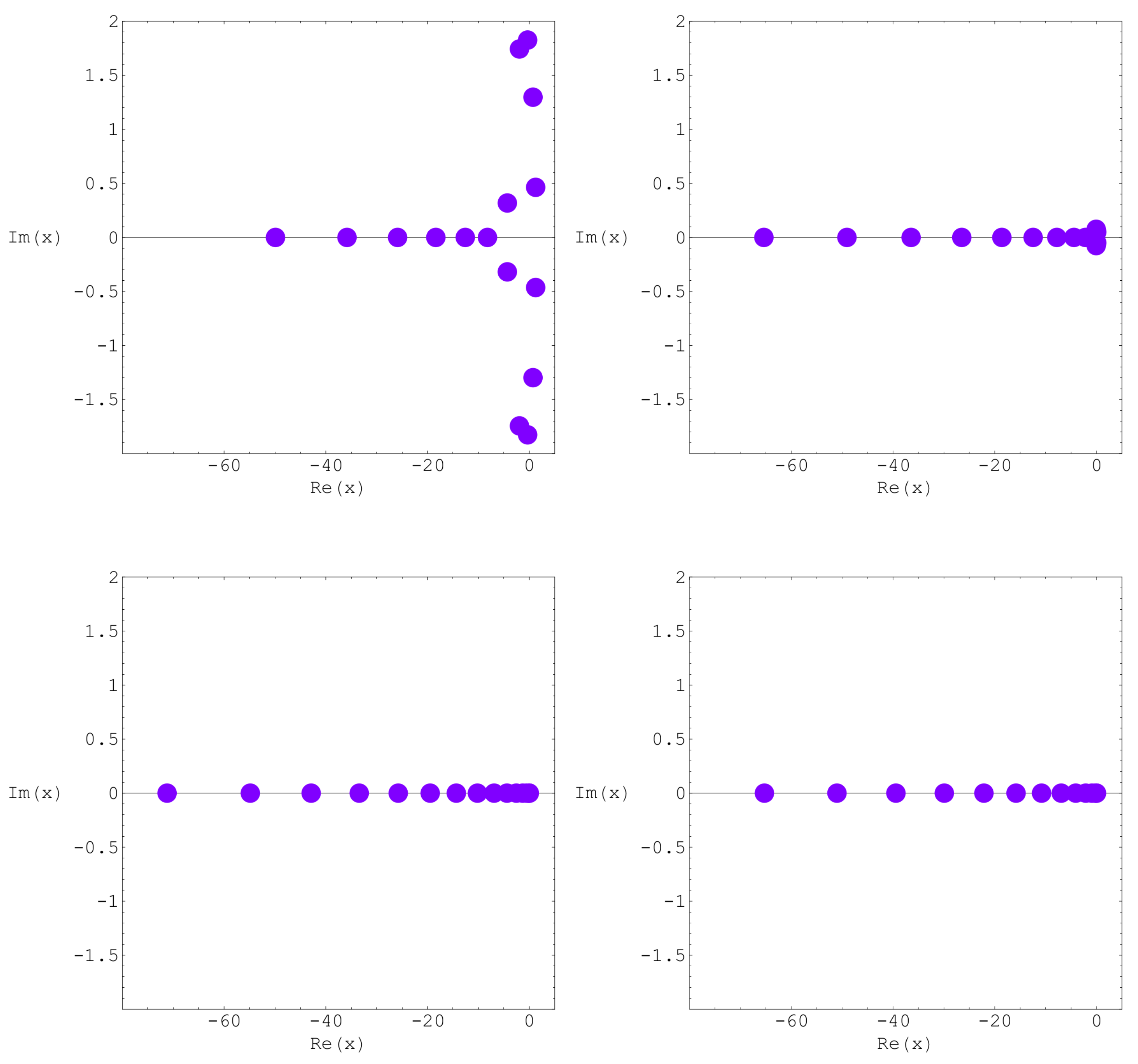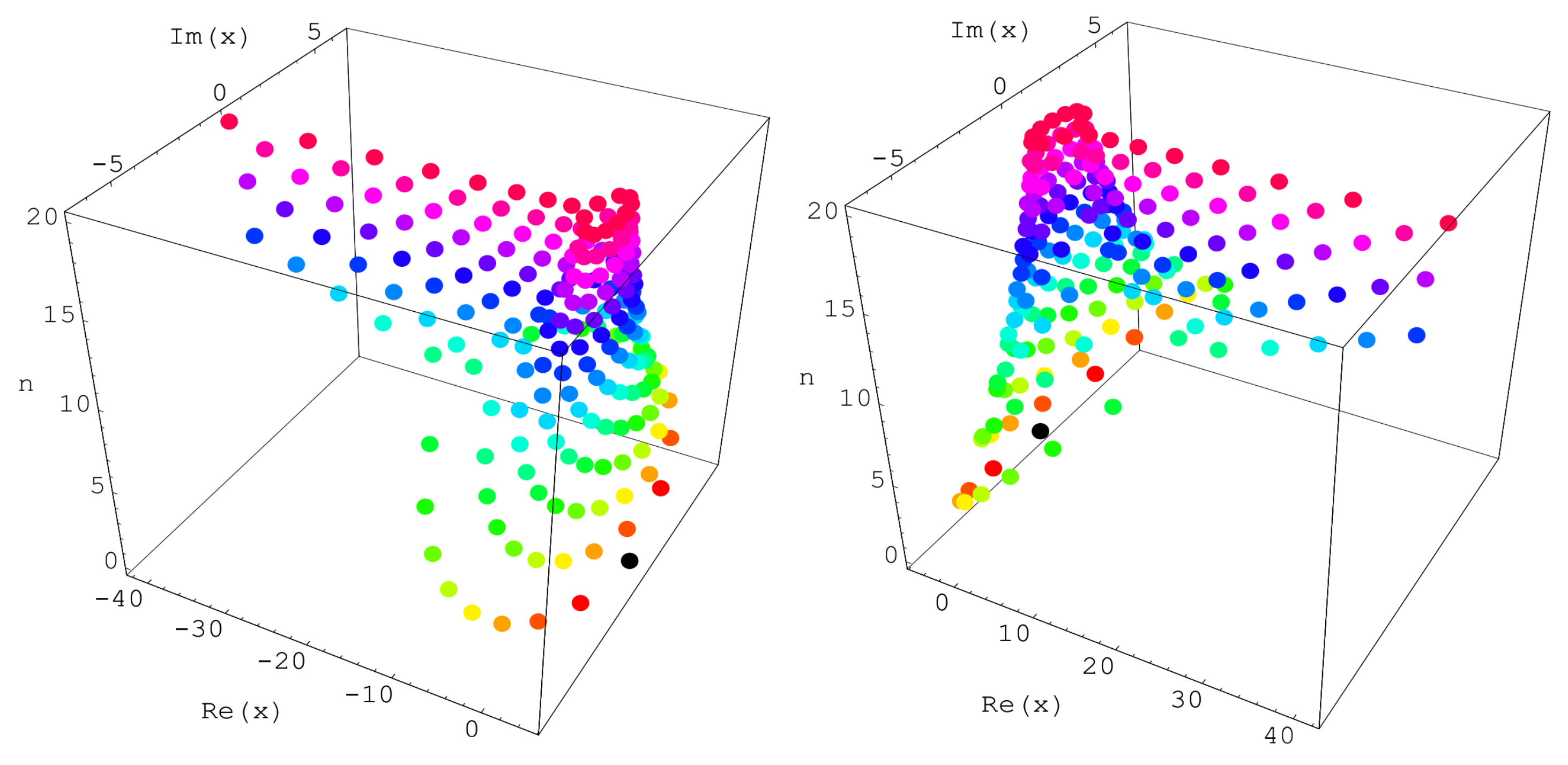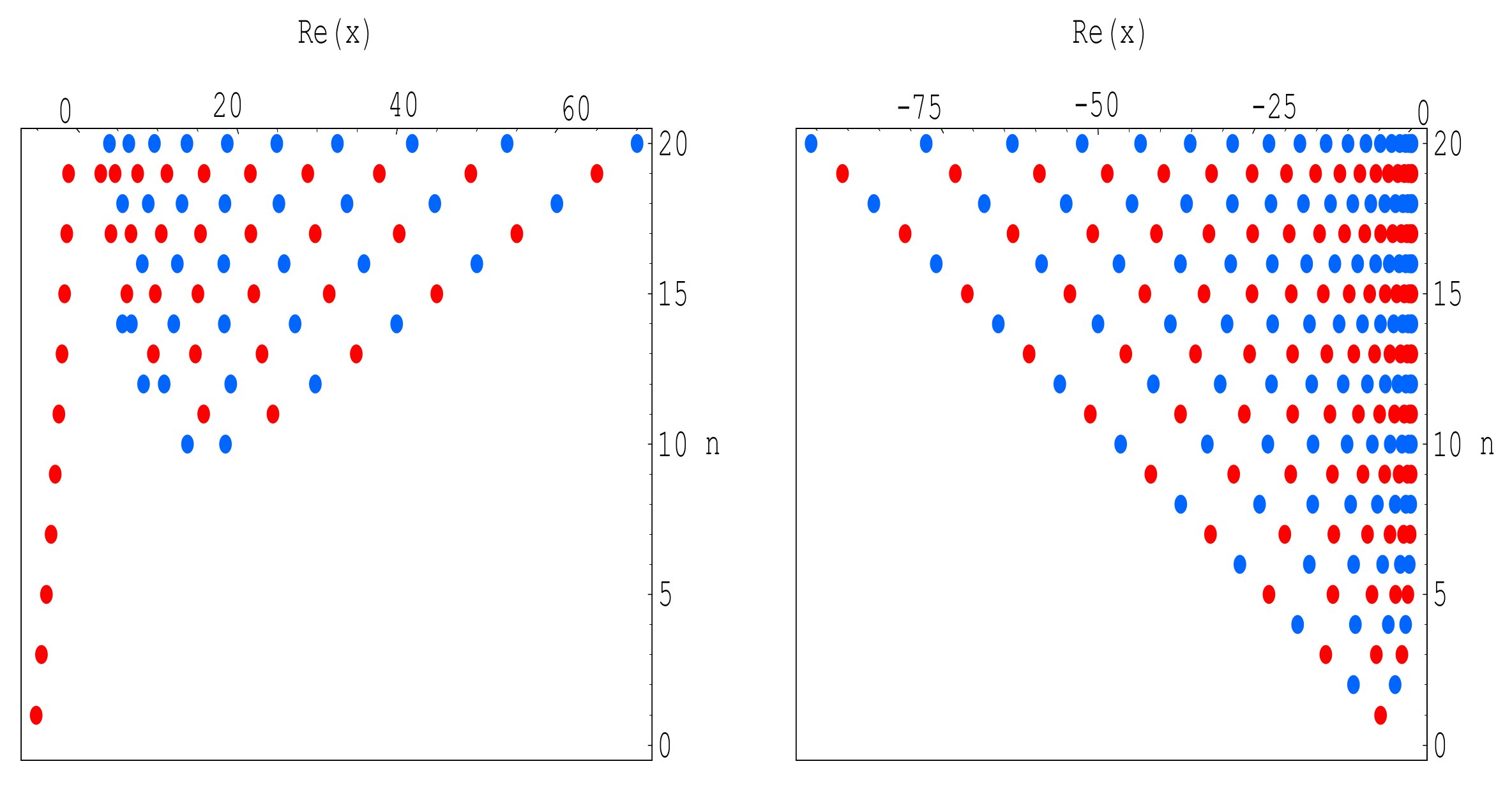1. Introduction
The moments of the Poisson distribution are a well-known connecting tool between Bell numbers and Stirling numbers. As we know, the Bell numbers
are those using generating function
The Bell polynomials
are this formula using the generating function
(see [
1,
2]).
Observe that
where
denotes the second kind Stirling number.
The generalized Bell polynomials
are these formula using the generating function:
(see [
2]).
In particular, the generalized Bell polynomials
where
Z is a Poission random variable with parameter
(see [
1,
2,
3]). The
-Bell polynomials
are this formula using the generating function:
(see [
3]), where,
and
r are real or complex numbers and
Note that
and
. The first few examples of
-Bell polynomials
are
From (1) and (2), we see that
Compare the coefficients in Formula (3). We can get
Recently, many mathematicians have studied the differential equations arising from the generating functions of special polynomials (see [
4,
5,
6,
7,
8]). Inspired by their work, we give a differential equations by generation of
-Bell polynomials
as follows. Let
D denote differentiation with respect to
t,
denote differentiation twice with respect to
t, and so on; that is, for positive integer
N,
We find differential equations with coefficients
, which are satisfied by
Using the coefficients of this differential equation, we give explicit identities for the -Bell polynomials. In addition, we investigate the zeros of the -Bell equations with numerical methods. Finally, we observe an interesting phenomena of ‘scattering’ of the zeros of -Bell equations. Conjectures are also presented through numerical experiments.
2. Differential Equations Related to -Bell Polynomials
Differential equations arising from the generating functions of special polynomials are studied by many authors to give explicit identities for special polynomials (see [
4,
5,
6,
7,
8]). In this section, we study differential equations arising from the generating functions of
-Bell polynomials.
Then, by (4), we have
and
We prove this process by induction. Suppose that
is true for N. From (7), we get
If we compare the coefficients on both sides of (8) and (9), then we get
and
Now, by (10), (11) and (12), we can obtain the coefficients
as follows. By (12), we get
It is not difficult to show that
Thus, by (14), we also get
From (10), we have that
and
For
in (11), we have
and
By induction on
i, we can easily prove that, for
Here, we note that the matrix
is given by
Now, we give explicit expressions for
. By (18), (19), and (20), we get
and
By induction on
i, we have
Finally, by (22), we can derive a differential equations with coefficients
, which is satisfied by
Theorem 1. For same as below the differential equationhas a solutionwhere By using Theorem 1 and (23), we can get this equation:
Compare coefficients in (24). We get the below theorem.
Theorem 2. For we havewhere By using the coefficients of this differential equation, we give explicit identities for the -Bell polynomials. That is, in (25) if , we have corollary.
Corollary 1. For we have For
it follows that equation
has a solution
In
Figure 1, we have a sketch of the surface about the solution
F of this differential equation. On the left of
Figure 1, we give
and
. On the right of
Figure 1, we give
and
.
Making
N-times derivative for (4) with respect to
t, we obtain
By multiplying the exponential series
in both sides of (26) and Cauchy product, we derive
By using the Leibniz rule and inverse relation, we obtain
So using (27) and (28), and using the coefficients of gives the below theorem.
Theorem 3. Let be nonnegative integers. Then When we give in (29), then we get corollary.
Corollary 2. For we have 3. Distribution of Zeros of the -Bell Equations
This section aims to demonstrate the benefit of using numerical investigation to support theoretical prediction and to discover new interesting patterns of the zeros of the
-Bell equations
. We investigate the zeros of the
-Bell equations
with numerical experiments. We plot the zeros of the
for
and
(
Figure 2).
In top-left of
Figure 2, we choose
and
,
. In top-right of
Figure 2, we choose
and
,
. In bottom-left of
Figure 2, we choose
and
. In bottom-right of
Figure 2, we choose
and
.
Prove that
, has
reflection symmetry analytic complex functions (see
Figure 3). Stacks of zeros of the
-Bell equations
for
from a 3-D structure are presented (
Figure 3).
On the left of
Figure 3, we choose
and
. On the right of
Figure 3, we choose
and
. In
Figure 3, the same color has the same degree
n of
-Bell polynomials
. For example, if
, zeros of the
-Bell equations
is red.
Our numerical results for approximate solutions of real zeros of the
-Bell equations
are displayed (
Table 1 and
Table 2).
Plot of real zeros of
for
structure are presented (
Figure 4).
In
Figure 4 (left), we choose
and
. In
Figure 4 (right), we choose
and
. In
Figure 4, the same color has the same degree
n of
-Bell polynomials
. For example, if
, real zeros of the
-Bell equations
is blue.
Next, we calculated an approximate solution satisfying
. The results are given in
Table 2.
4. Conclusions
We constructed differential equations arising from the generating function of the -Bell polynomials. This study obtained the some explicit identities for -Bell polynomials using the coefficients of this differential equation. The distribution and symmetry of the roots of the -Bell equations were investigated. We investigated the symmetry of the zeros of the -Bell equations for various variables r and , but, unfortunately, we could not find a regular pattern. We make the following series of conjectures with numerical experiments:
Let us use the following notations.
denotes the number of real zeros of
lying on the real plane
and
denotes the number of complex zeros of
. Since
n is the degree of the polynomial
, we have
(see
Table 1).
We can see a good regular pattern of the complex roots of the -Bell equations for and . Therefore, the following conjecture is possible.
Conjecture 1. For and , prove or disprove that As a result of investigating more and variables, it is still unknown whether the conjecture 1 is true or false for all variables and (see Figure 1 and Table 1). We observe that solutions of
-Bell equations
has
, reflecting symmetry analytic complex functions. It is expected that solutions of
-Bell equations
, has not
reflection symmetry for
(see
Figure 2,
Figure 3 and
Figure 4).
Conjecture 2. Prove or disprove that solutions of -Bell equations , has not reflection symmetry for .
Finally, how many zeros do
have? We are not able to decide if
has
n distinct solutions (see
Table 1 and
Table 2). We would like to know the number of complex zeros
of
Conjecture 3. Prove or disprove that has n distinct solutions.
As a result of investigating more
n variables, it is still unknown whether the conjecture is true or false for all variables
n (see
Table 1 and
Table 2). We expect that research in these directions will make a new approach using the numerical method related to the research of the
-Bell numbers and polynomials which appear in mathematics, applied mathematics, statistics, and mathematical physics. The reader may refer to [
5,
6,
7,
8,
9,
10] for the details.









